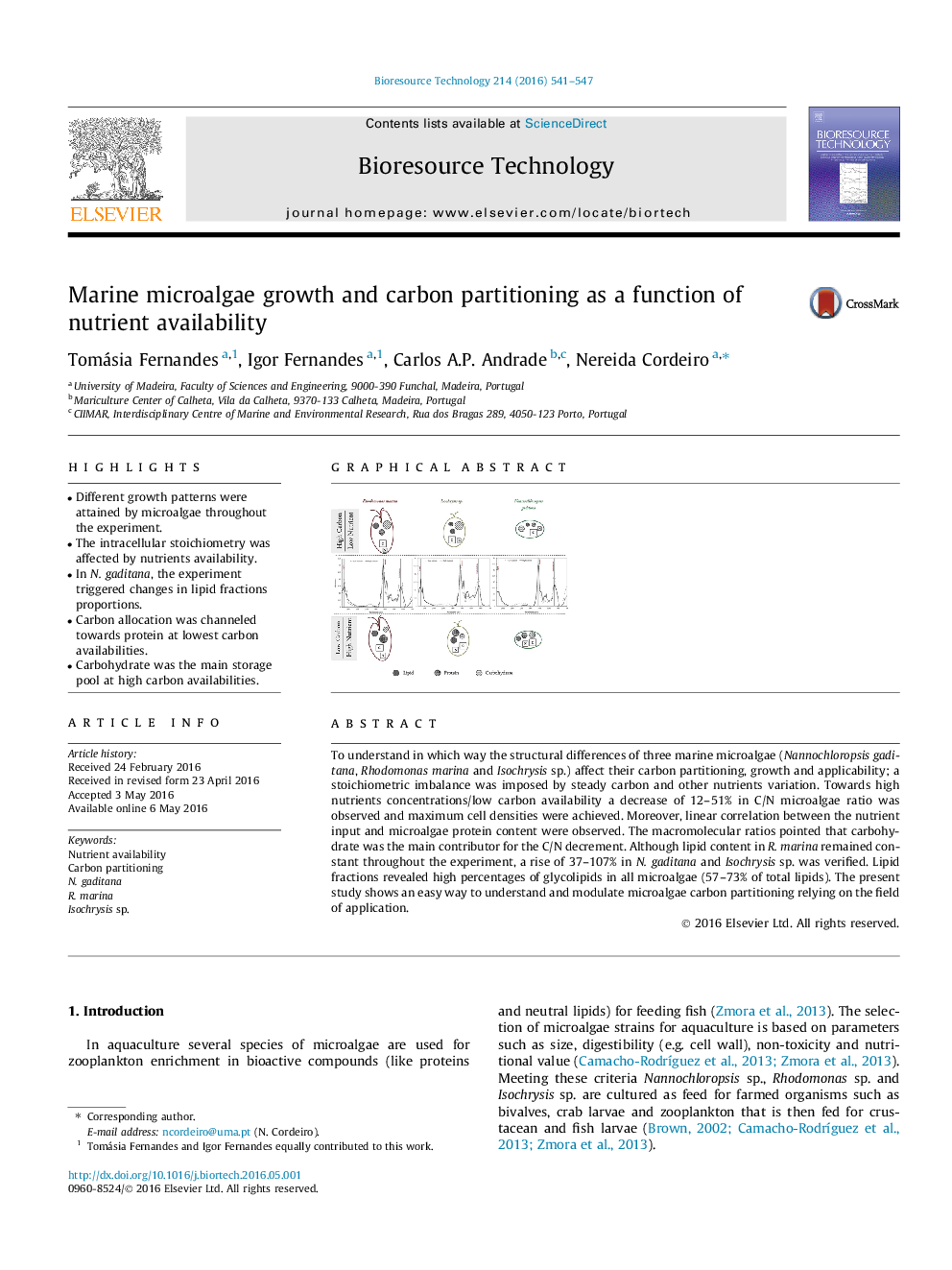| Article ID | Journal | Published Year | Pages | File Type |
|---|---|---|---|---|
| 679095 | Bioresource Technology | 2016 | 7 Pages |
•Different growth patterns were attained by microalgae throughout the experiment.•The intracellular stoichiometry was affected by nutrients availability.•In N. gaditana, the experiment triggered changes in lipid fractions proportions.•Carbon allocation was channeled towards protein at lowest carbon availabilities.•Carbohydrate was the main storage pool at high carbon availabilities.
To understand in which way the structural differences of three marine microalgae (Nannochloropsis gaditana, Rhodomonas marina and Isochrysis sp.) affect their carbon partitioning, growth and applicability; a stoichiometric imbalance was imposed by steady carbon and other nutrients variation. Towards high nutrients concentrations/low carbon availability a decrease of 12–51% in C/N microalgae ratio was observed and maximum cell densities were achieved. Moreover, linear correlation between the nutrient input and microalgae protein content were observed. The macromolecular ratios pointed that carbohydrate was the main contributor for the C/N decrement. Although lipid content in R. marina remained constant throughout the experiment, a rise of 37–107% in N. gaditana and Isochrysis sp. was verified. Lipid fractions revealed high percentages of glycolipids in all microalgae (57–73% of total lipids). The present study shows an easy way to understand and modulate microalgae carbon partitioning relying on the field of application.
Graphical abstractFigure optionsDownload full-size imageDownload as PowerPoint slide
